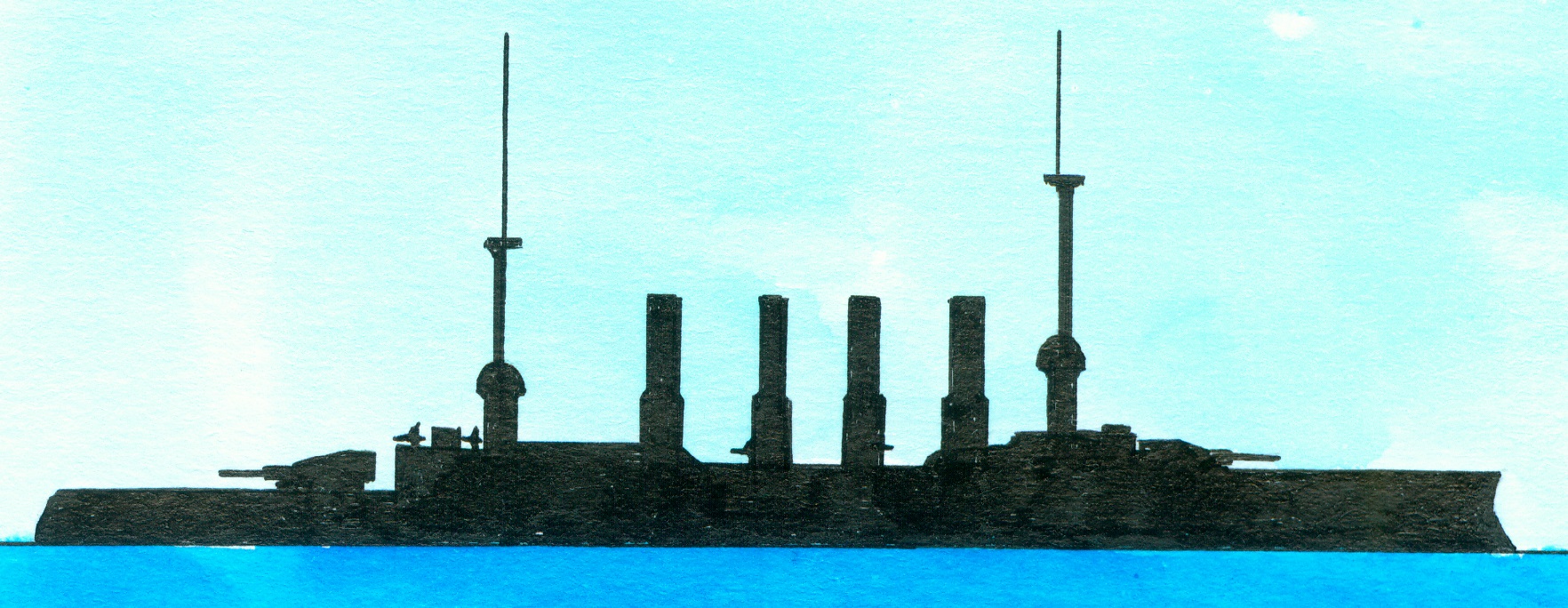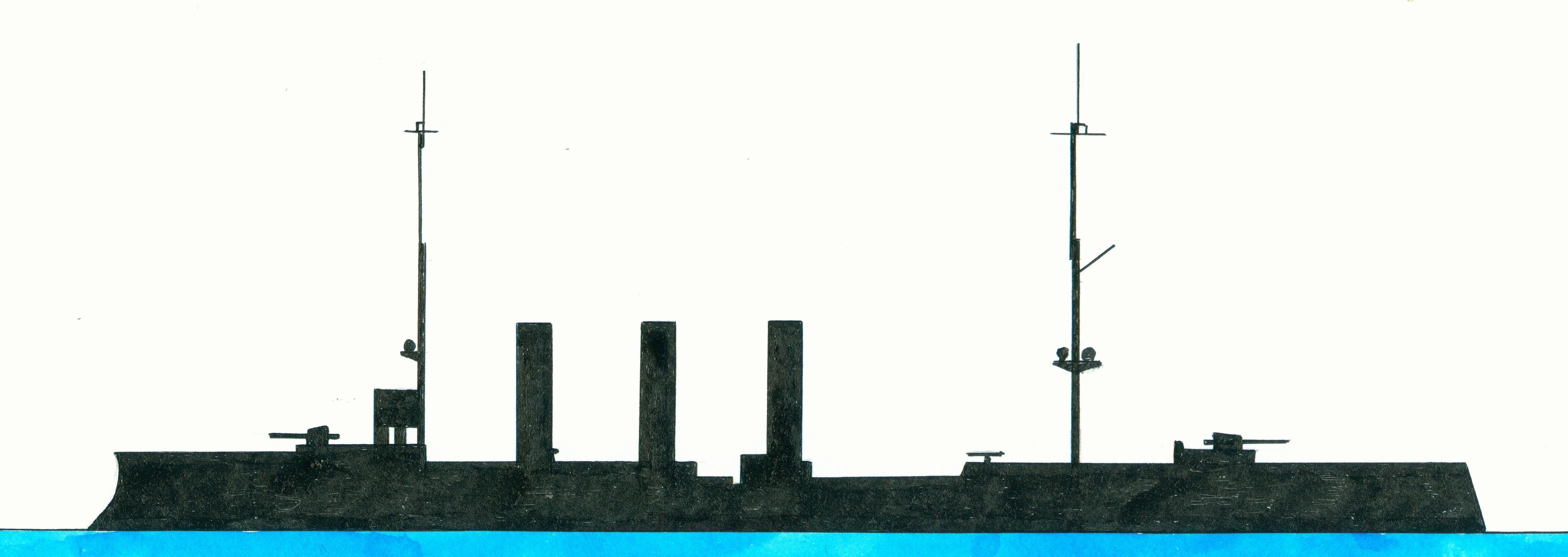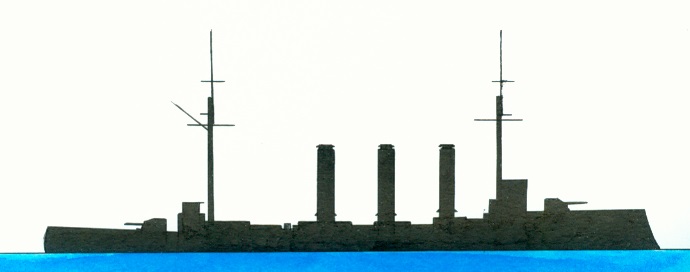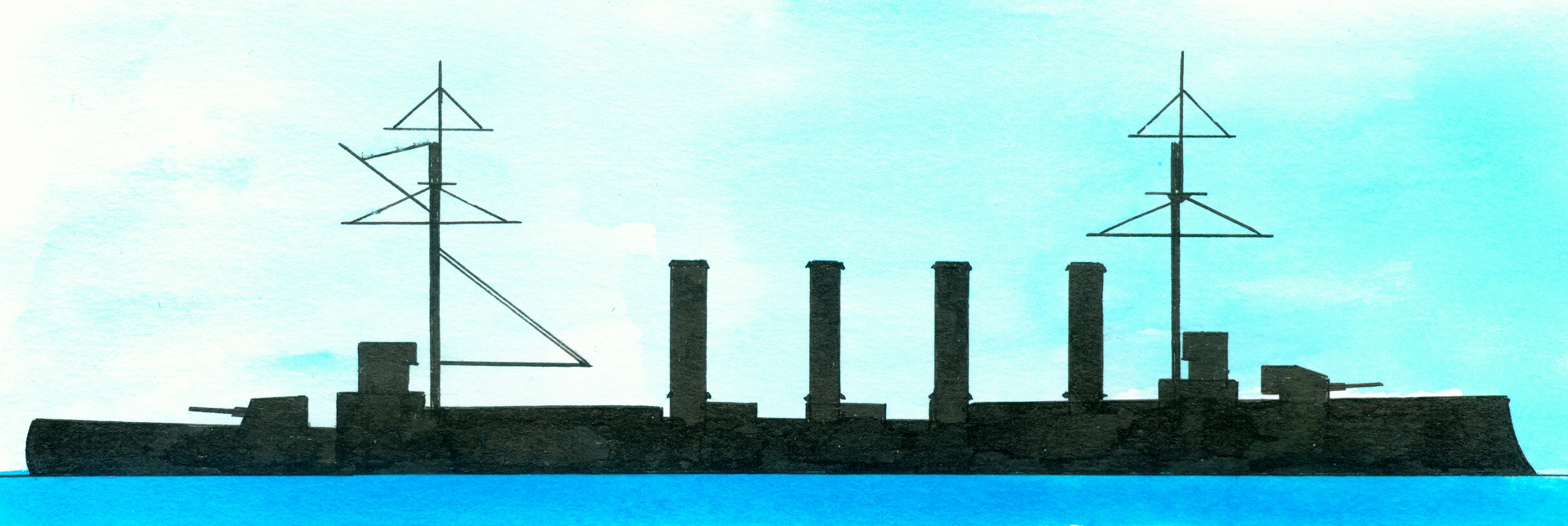German Scharnhorst armoured cruisers
German SMS Emden, sister ship of the Dresdem
British Monmouth-class armoured cruisers
Britih Drake-class armoured cruisers
An item dated London, England 5th reported that the British admiralty received tidings from a German source dealing with a battle off Valparaiso, Chile but was lacking an official confirmation. German tidings claimed that on Sunday a German naval force consisting of the Scharnhorst (1), Gneisenau (2), Leipzig (3), Dresden (4) and Neurenberg (5) battled with a part of the British squadron commanded by admiral Cradock. The British Monmouth (6) sunk but the Glasgow (7) and Otranto (8) managed to escape.
A second item reported that the Good Hope (9) was seriously damaged but that the Glasgow and the auxiliary cruiser Otranto gave up the battle and escaped. The admiralty still denied the correctness of the German tidings while the battleship Canopus (10) part of the British squadron was not mentioned. Further more were just 3 German warships returned at Valparaiso despite 5 were sighted in the Chilean waters.
Notes
1. Laid down at the shipyard of Blohm&Voss, Hamburg, Germany with yard number 175 on 3 January 1905, launched on 22 June 1906, commissioned on 24 October 1907 and sunk in a battle with the British fleet during the so-called Battle of the Falkland Islands on 8 December 1914. Of the Schanhorst-class consisting of the Scharnhorst and the Gneisenau. Preceded by the Roon-class and succeeded by the SMS Blücher.
2. Laid down at the shipyard of AG Weser, Bremen, Germany with yard number 144 on 28 December 1904, launched on 14 June 1906, building costs more as 19 million goldmarks, commissioned on 6 March 1908 and sunk in a battle with the British fleet during the so-called Battle of the Falkland Islands on 8 December 1914. Preceded by the Roon-class and succeeded by the SMS Blücher.
3. Contract name ‘N’. Laid down by AG Weser, Bremen, Germany in 1904m launched on 21 March 1905, commissioned on 20 April 1906 and sunk at the battle of Falkland Islands on 9 December 1914. Of the Bremen-class consisting of the Bremen, Leipzig, Lübeck, München, Danzigm Hamburg and Berlin, preceded by the Gazelle-class and succeeded by the Königsberg-class.
4. Of the Emden-class consisting of the Dresden and Emden, preceded by the Königsberg-class and succeeded by the Kolberg-class. , Laid down by Blohm&Voss, Hamburg, Germany with yard number 195 in 1906, launched on 5 October 1907, commissioned on 14 November 1908, present at the Battle of Coronel on 1 November 1914 when the German East Asia Squadron destroyed a British squadron and at the Battle of the Falkland Islands when the contrary happened on 8 December 1914, she escaped until arrived Robinson Crusoe Island in March 1915, with a worn out machinery and desperately lacking coal spoke her commanding officer with the Chilean government to consider internment, before a decision was taken was she attacked by British warships as what became known the Battle of Mas a Tierra on 14 March 1915, scuttled by her own crew of which the most escaped and since then in Chilean internment with the wreck still lying in the sea bottom on a depth of 70 metres.
5. Contract name Ersatz Blitz. Laid down at Holwaldtswerke, Kiel, Germany in 1906, launched on 28 April 1906, commissioned on 10 April 1908 and sunk at the Battle of the Falkland Islands on 8 December 1914, Of the Königsberg-class, consisting of the Königsberg, Nürnberg, Stettin and Stuttgart, preceded by the Bremen-class and succeeded by the Dresden-class.
6. Laid down by London and Glasgow Shipping Company. Govan, Scotland on 29 August 1899, launched on 13 November 1901, completed on 2 December 1903 and sunk during the Battle of Coronel against a German squadron on 1 November 1914 with her entire crew of 735 men. She was heavily damaged by the SM Gneisenau (1) and finally capsized after the German light cruiser SMS Nürnberg (2) attacked her. Of the Monmouth-class also called County-class, built to act against light cruisers and armed merchant ships consisting of the Monmouth, Bedford, Essex, Kent, Berwick, Cornwall, Cumberland. Donegal, Lancaster and Suffolk. Preceded by the Drake-class and succeeded by the Devonshire-class.
7. Laid down by Fairfield Shipbuilding&Engineering, Govan, Scotland on 25 March 1909, launched on 30 September 1909, completed in September 1910 and sold to be broken up on 29 April 1927. Of the Town light class Bristol sub-class 2nd rate/protected cruisers
8. Laid down by Workman, Clark and Company, Belfast, Ireland as passenger ship with yard number 278 in 1907, launched on 20 July 1909, purchased by the Admiralty on 4 Augustus 1914, commissioned as a merchant cruiser on 14 August and after a collision with the Kashmir she strike Old Women’s Reef and sunk on 6 October 1918.
9. Of the Drake-class consisting of the Drake, Good Hope, King Alfred and Leviathan preceded by the Cressy-class and succeeded by the Monmouth-class. In fact was this class an enlarged and improved Cressy-class design made by chief constructor Sir William White with as potential opponent the French armoured cruiser Jeanne d’Arc.Laid down at the shipyard of Fairfield Shipbuilding&Engineering, Govan, Scotland on 11 September 1899, renamed Good Hope on 2 October 1900, launched on 21 February 1901, completed on 8 November 1902, added to the reserve in 1913, decommissioned in mid 1914 and sunk in the Battle of Coronel 1 November 1914.
10. Laid down on 1 December 1896, launched on 11 March 1899, completed in October 1900, commissioned on 1 November 1921, renamed HMS Crescent in April 1920 and finally sold to be broken up on 19 December 1922. Of the Canopus-class consisting of the Canopus, Albion, Glory, Goliath, Ocean and Vengeance, succeeded by the Majestic-class and preceded by the Formidable-class.




